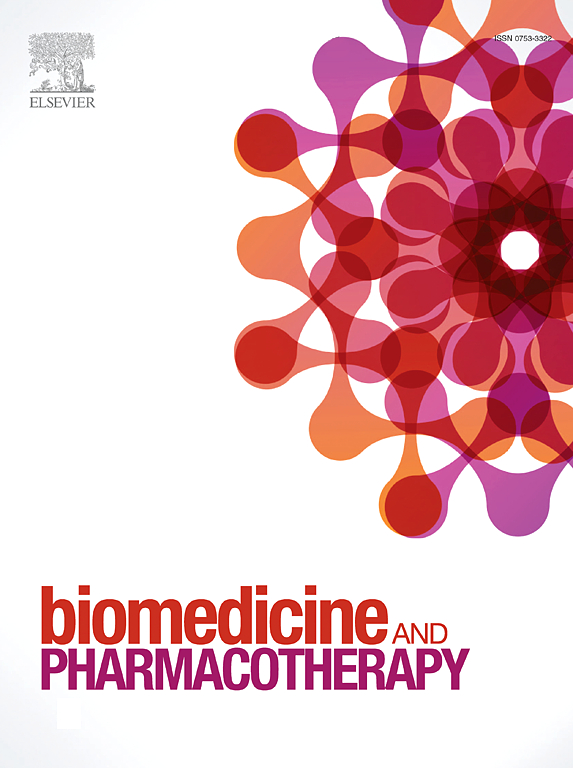靶向LSD1对急性淋巴细胞白血病细胞侵袭性和机械反应的双重影响。
IF 6.9
2区 医学
Q1 MEDICINE, RESEARCH & EXPERIMENTAL
引用次数: 0
摘要
表观遗传改变是癌症的标志,组蛋白修饰剂在基因转录、DNA稳态和其他核功能中起着关键作用。赖氨酸特异性去甲基化酶1 (LSD1)是H3K4甲基化的关键调节因子,已成为包括白血病在内的癌症治疗中有希望的药理学靶点。急性淋巴细胞白血病(ALL)是最常见的儿科癌症,由于对表观遗传治疗如何影响白血病传播的了解有限,仍然是一个重大的治疗挑战。在这项研究中,我们证明靶向LSD1增强了ALL细胞的侵袭能力,诱导了延长的侵袭性表型,并增加了核的可变形性。通过3D矩阵模型,在实验条件下,LSD1抑制促进ALL细胞侵袭,但不显著影响细胞周期进程或凋亡。有趣的是,LSD1靶向减少了ALL细胞在体内的扩散和组织定植,这表明取决于细胞环境的不同效果。我们的研究结果表明,LSD1抑制会损害趋化反应和跨内皮迁移,这是外渗和体内侵袭的关键过程。这些结果揭示了LSD1在白血病细胞迁移中的双重作用:促进三维环境中的侵袭性,同时减少体内的外渗和趋化性。这种双重效应强调了细胞环境在决定治疗结果和针对白血病传播特定阶段的策略发展中的重要性。本文章由计算机程序翻译,如有差异,请以英文原文为准。
Dual effect of targeting LSD1 on the invasiveness and the mechanical response of acute lymphoblastic leukemia cells
Epigenetic alterations are hallmarks of cancer, with histone modifiers playing critical roles in gene transcription, DNA homeostasis, and other nuclear functions. Lysine-specific demethylase 1 (LSD1), a key regulator of H3K4 methylation, has emerged as a promising pharmacological target in cancer treatment, including leukemia. Acute lymphoblastic leukemia (ALL), the most common pediatric cancer, remains a significant therapeutic challenge due to limited understanding of how epigenetic therapy impacts leukemia dissemination. In this study, we demonstrate that targeting LSD1 enhances the invasive capacity of ALL cells, inducing an elongated, invasive phenotype and increasing nuclear deformability. Using a 3D matrix model, LSD1 inhibition promoted ALL cell invasion without significantly affecting the cell cycle progression or apoptosis under the tested conditions. Interestingly, LSD1 targeting reduced ALL cell spreading and tissue colonization in vivo, suggesting differential effects depending on the cellular context. Our findings indicate that LSD1 inhibition impairs chemotactic responses and transendothelial migration, key processes for extravasation and in vivo invasiveness. These results reveal a dual role for LSD1 in leukemia cell migration: promoting invasiveness in 3D environments while reducing extravasation and chemotaxis in vivo. This dual effect underscores the importance of cellular context in determining therapeutic outcomes and the development of strategies targeting specific stages of leukemia dissemination.
求助全文
通过发布文献求助,成功后即可免费获取论文全文。
去求助
来源期刊
CiteScore
11.90
自引率
2.70%
发文量
1621
审稿时长
48 days
期刊介绍:
Biomedicine & Pharmacotherapy stands as a multidisciplinary journal, presenting a spectrum of original research reports, reviews, and communications in the realms of clinical and basic medicine, as well as pharmacology. The journal spans various fields, including Cancer, Nutriceutics, Neurodegenerative, Cardiac, and Infectious Diseases.

 求助内容:
求助内容: 应助结果提醒方式:
应助结果提醒方式:


